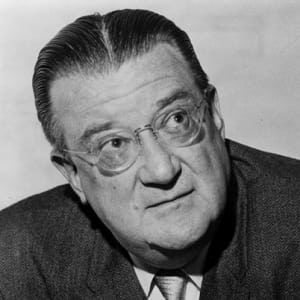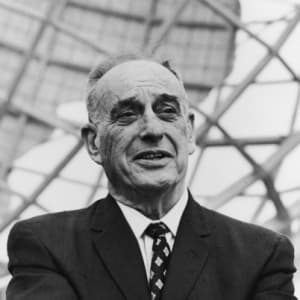Land Use Planning, Transit, and the Dodgers: The Legal Planet World Series Special
Stop the Myths About Evil Walter O’Malley

Since the World Series starts in a few hours, I fully expect the standard kvetchers to come out of the woodwork and complain about Los Angeles stealing the Dodgers from Brooklyn, etc. Peter Golenbock, in Bums: An Oral History of the Brooklyn Dodgers, compares O’Malley to Hitler and Stalin.
Nonsense. It is time to set the record straight.
O’Malley wanted to stay in Brooklyn. He also recognized that 1) Ebbets Field was falling apart and not big enough (its capacity was only 31,902); and 2) Brooklyn itself was changing, with its fan base moving to Long Island.
So he made the City Fathers an offer: give me the land at the Atlantic Yards — where Barclays Center is currently located — and I will build and finance a new stadium on my own. The Atlantic Yards was particularly important for O’Malley because it was and remains the western terminus for the Long Island Railroad; he figured that Dodger fans would take the train in and come back afterwards.
But such a proposal was anathema to the public works (and sort of everything else) boss of New York City, Robert Moses. Moses had long held a dream of building a great urban park in Flushing Meadow (he had tried in 1939 only to be upended by the mismanagement of other), and a new Dodger ballpark would be the perfect anchor. Besides, Moses HATED public transit: in his classic biography of Moses, Robert Caro details how Moses not only made the bridges on the Long Island Expressway so low that buses couldn’t travel on them, but that he rejected the idea of separating the two sides of the Van Wyck Expressway or the Long Expressway in order to allow for a rail line down the middle. He purposefully underfunded the LIRR and the subway. And Moses was such an empire builder that he didn’t really care about the Dodgers: although an accomplished athlete himself, Moses didn’t understand why people would sit watching other people play sports (which actually makes some sense when you think about it, but whatever).

So Moses demanded that if O’Malley wanted a new stadium, it would be a public facility anchoring Moses’ new grand Flushing Park. For a time, Moses claimed that the city could not get the land at the Atlantic Yards because it could not use eminent domain for a private tenant. That laughter you hear is anyone who knows anything about Moses, who often boasted that none of his accomplishments “were done with any taint of legality.” Besides, Berman v Parker (1954) explicitly allowed for such uses.
O’Malley would have none of it: “they are the Brooklyn Dodgers, not the Queens Dodgers,” he replied, and of course he was right. He also wanted to build a stadium himself, with his own money: “it is terrible to be the government’s tenant,” he said, and he was right about that, too — it was ESPECIALLY terrible to be Robert Moses’ tenant. (Golenbock gets this one wrong, too: he says that O’Malley told the city to give him a stadium, which is flat wrong. Dodger Stadium was built on the principles that O’Malley proposed).
Moses, as was his wont, told O’Malley it was his way or the highway (and with Moses, his way pretty much always WAS the highway). But unlike pretty much everyone else in New York, O’Malley had leverage because of the offer from Los Angeles, and he did what virtually no one else could do: he told Moses to get stuffed, and the rest is history. (O’Malley did persuade Horace Stoneham, owner of the New York Giants, to move to San Francisco, but again, the Giants needed a new stadium, and even with Willie Mays were having a terrible time with attendance because what else do you expect from Gints fans).
And in case anyone brings this up, Chavez Ravine was NOT razed for Dodger Stadium: it was razed for public housing, which in the McCarthyite backlash of the 1950’s, was never built (because of course it was socialist or something).
So enough of this nonsense. If you hate the Dodgers, you’re jealous because you don’t live in Los Angeles, you’re a Red Sox fan, whatever, fine. But the story of Perfidious and Greedy Walter O’Malley dashing the hopes of Brooklyn really deserves to take its final rest.
Reader Comments
One Reply to “Land Use Planning, Transit, and the Dodgers: The Legal Planet World Series Special”
Comments are closed.






The O’Malley plan for the Atlantic Yards would have been the first stadium with a roof — a dome to be designed by Buckminster Fuller! See: .